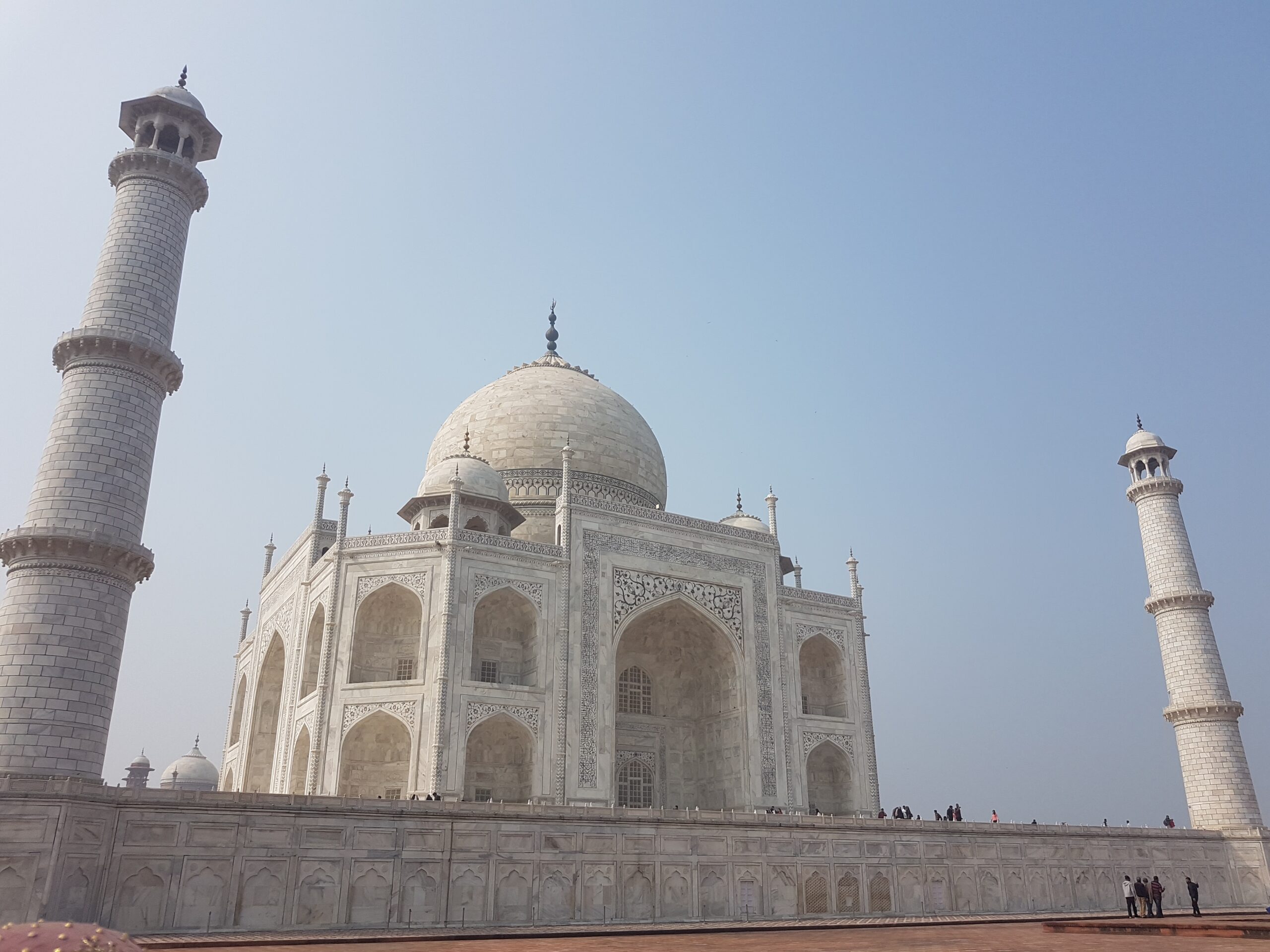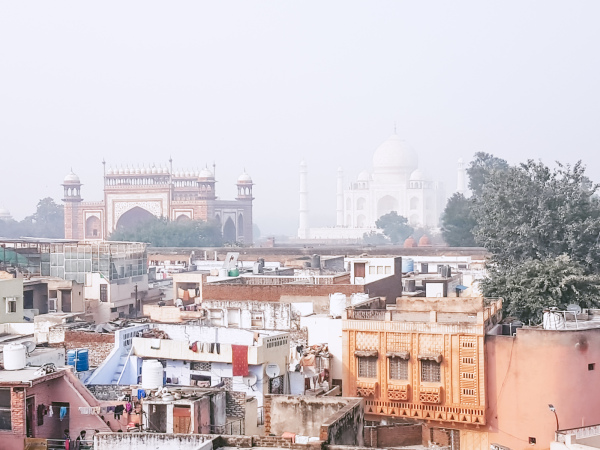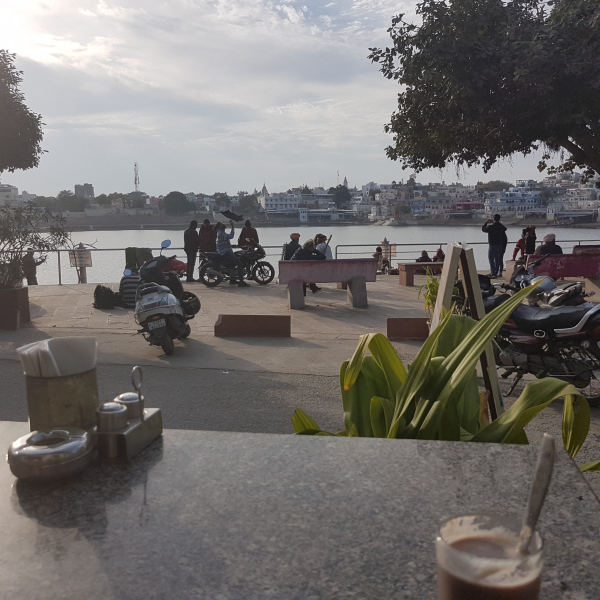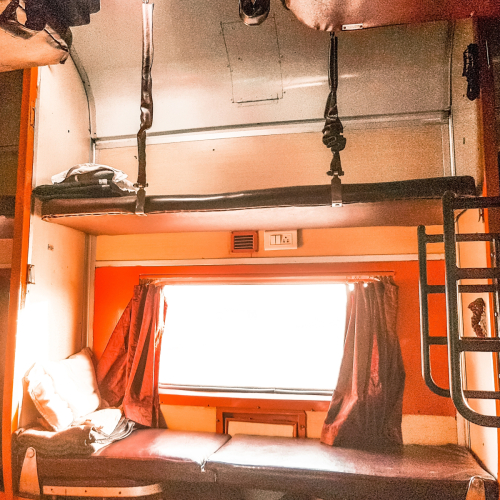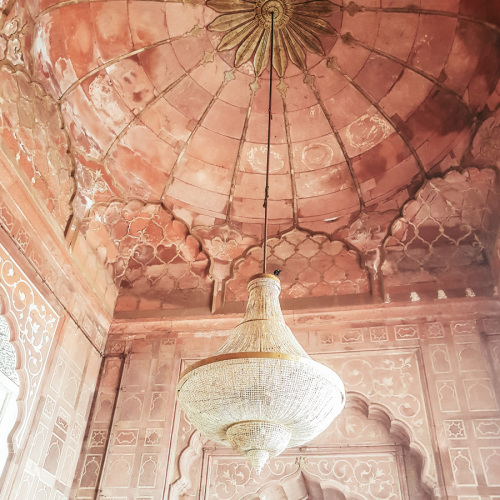In January 2020, just before the world went into lockdown, I set off on a 14-day Northwest India travel adventure through the renowned Golden Triangle and the colorful region of Rajasthan. The decision was spontaneous, sparked during a playful mobile game of “Where to next?” while in Bali. What began as a lighthearted idea soon turned into a deeply meaningful travel experience—rich in history, culture, and unforgettable encounters.
I found a like-minded Swiss travel companion through a Facebook group for solo female travelers. Together, we partnered with a helpful local contact—an Indian man who had once lived in Germany—who curated an itinerary that promised both safety and authenticity. His local expertise shaped the entire experience, giving us insight into India far beyond what guidebooks offer.
Delhi: Where Chaos Meets Grace
Our adventure began in Delhi, a city of striking contrasts. It’s where centuries-old Mughal architecture stands beside modern shopping malls and skyscrapers. With the guidance of our local host, we were quickly immersed in its vibrant rhythm. One of our first and most enjoyable tasks was to prepare for our visit to the Taj Mahal by shopping for traditional Indian attire. The process of selecting saris and sparkling jewelry from bustling markets became an experience in itself.
As we wandered through the labyrinthine alleys of Old Delhi, we tasted fragrant street food, dodged tuk-tuks, and admired the ornate facades of faded colonial buildings. Jama Masjid offered a rare moment of calm. Standing barefoot on the cool marble, with the echoing call to prayer overhead, brought a deep sense of reverence. Delhi was a city that stirred all the senses—and introduced us to the beautiful chaos of India.
Agra: Tradition Woven in Marble
In Agra, the grandeur of the Taj Mahal awaited. But beyond its timeless beauty, it was our effort to honor Indian tradition that made the visit truly special. Using the fabric we had purchased in Delhi, we had bespoke sari blouses tailored by local artisans. Our hands were adorned with henna, each curl and swirl telling a quiet story.
Draping a sari turned out to be more complicated than expected. Due to cultural sensitivities, the hotel’s male staff couldn’t assist us. Instead, female guests generously stepped in, turning a potential problem into a heartwarming moment of camaraderie. Wearing our saris, we arrived at the Taj at dawn. The white marble glowed in the morning light, and despite the crowds, the atmosphere felt intimate, almost sacred.
Later, at Agra Fort, we gazed back at the Taj from a distance. That moment, suspended between past and present, is etched into my memory.
Jaipur: Royal Colors and Everyday Rituals
Next, we traveled to Jaipur, the Pink City, where ancient forts and bustling markets painted a vibrant picture of Rajasthan’s regal past. We visited the Amber Fort, where intricate mirror mosaics sparkled under the sunlight. Climbing the ramparts, I imagined royal processions once parading these very halls.
The City Palace combined Mughal and Rajasthani architecture with mesmerizing detail, while the whimsical Patrika Gate became our favorite photo stop. But Jaipur’s spirit wasn’t confined to monuments—it lived in the street vendors, the jewelers, and the aroma of cardamom tea. Haggling at local bazaars became more than a transaction; it was a playful cultural dance, one that connected us with locals on a personal level.
In Jaipur, even the act of buying a scarf became a story.
Pushkar: Stillness on Sacred Shores
Pushkar was a revelation. This sacred town, built around a tranquil lake and home to the only Brahma Temple in India, exuded serenity. Compared to the clamor of Delhi or the grandeur of Jaipur, Pushkar invited silence and reflection.
We walked barefoot around the holy lake, watching pilgrims make offerings and listening to temple bells echo through the dusk. Sunset over the lake was nothing short of poetic. The sky blushed in warm tones, mirrored perfectly in the water. Over a vegetarian thali and ginger tea, we found time to pause—something so rare on fast-paced journeys.
Pushkar offered a slower rhythm, inviting us to not just see, but to feel India.
Udaipur: Lakes, Legends, and Lavish Palaces
Nicknamed the “Venice of the East,” Udaipur dazzled with its lakes and whitewashed facades. The sprawling City Palace was a highlight, filled with intricate carvings, painted ceilings, and secret courtyards that whispered of royal intrigue.
A visit to Saheliyon-ki-Bari—“Garden of the Maidens”—gave us a moment of peace. Here, fountains danced between flower beds, and the gentle murmur of water made for a meditative experience. Every element, from palace balconies to street-side chai stands, seemed designed to enchant.
A twilight boat ride on Lake Pichola sealed the magic. As the sun set behind the hills, the shimmering water reflected the city’s golden glow.
Jodhpur: A City Dressed in Blue
The road led us to Jodhpur, where blue-washed homes unfurled beneath the towering Mehrangarh Fort. From the fort’s ramparts, the city appeared like a sea of sapphire, stretching out toward the desert horizon.
Inside the fort, ornate rooms showcased artifacts of warrior kings. Down below, the markets bustled with life—spices, fabrics, and street snacks tempting us at every turn. The scent of sandalwood and cumin lingered in the air, leaving a sensory imprint that stayed long after we’d departed.
Jodhpur was both regal and rugged—a bold blend of heritage and hustle.
Jaisalmer: Golden Echoes in the Desert
Our final stop was Jaisalmer, the Golden City. Rising like a mirage from the sands of the Thar Desert, its sandstone fort glowed in the afternoon sun. Unlike most forts in India, Jaisalmer Fort is still inhabited. Staying within its ancient walls was like living inside a living museum.
Though I fell ill during our time there, the city’s warmth—both metaphorical and literal—offered comfort. Sun-soaked rooftops, ginger tea, and the kindness of strangers turned my recovery into a moment of quiet gratitude. Wandering through the fort’s winding alleys, I found a golden compass in a market stall. Today, it sits on my desk, a symbol of this journey and the inner compass that always points toward adventure.
The Long Ride Back: Reflections on the Rails
We concluded our trip with an overnight train ride back to Delhi. The rhythmic clatter of wheels against tracks became a fitting soundtrack for reflection. We watched the landscape change from desert to farmland, from village to city. The 18-hour journey was no luxury experience, but it offered a final, raw glimpse of India’s layers.
Despite the cramped compartments and minimal comforts, the ride was unforgettable—less for the amenities, and more for the stories it carried.
India: A Land of Contrasts and Connection
India defies easy definitions. It is opulent and raw, spiritual and chaotic, ancient and youthful—all at once. The honking tuk-tuks, the sacred cows on highways, the families of eight squeezed into tiny rickshaws—it’s these moments that shape your understanding of the country more than any palace or monument.
Traveling through India offers much more than sightseeing. It demands presence. It challenges you to open up, embrace the unfamiliar, and be changed by it.
When to Travel: Finding the Perfect Season for Northwest India
Timing matters when it comes to India, especially in the northwest, where the extremes of weather shape the rhythm of life. The best time to visit this region—Delhi, Agra, and Rajasthan—is between October and March, when the air turns crisp, the skies stay clear, and the searing summer heat is replaced by cool, golden mornings.
We traveled in January, and it turned out to be ideal. Sightseeing was pleasant, layering up in the early hours gave way to light cottons by midday, and the cool evenings invited slow strolls and warm cups of masala chai. As a bonus, traveling during this time means fewer interruptions from monsoon rains and more opportunities to experience India’s vibrant winter festivals, such as Lohri or Republic Day, adding even more depth to the experience.
Highlights: The Moments That Stayed With Us
Our journey was filled with the kind of moments that don’t fade. Some were grand, others quiet—but all of them unforgettable.
-
That first glimpse of the Taj Mahal at sunrise, wrapped in mist and myth, took our breath away.
-
Shopping for saris in Delhi turned into a sensory adventure—each fabric a story, each pattern a memory.
-
Wearing traditional attire at the Taj, and the shared smiles that followed created unexpected connections.
-
The mirror hall inside Amber Fort, glinting like starlight in the daytime, made us feel part of something royal.
-
Pushkar’s sunset, mirrored in the sacred lake, was the kind of stillness you carry with you.
-
Jodhpur’s indigo cityscape, viewed from Mehrangarh Fort, was both striking and surreal.
-
Sleeping within Jaisalmer’s ancient walls, surrounded by history and golden sandstone, was like living in a dream.
A Farewell Before the World Changed
When we boarded our flight home, we had no idea what awaited the world just weeks later. Our journey through India became a kind of time capsule—one last glimpse of global freedom, connection, and serendipity before the borders closed and travel paused.
From Delhi’s dynamic chaos to Pushkar’s sacred quiet, from the marble romance of the Taj to the golden magic of Jaisalmer, the journey reminded me why I travel: to connect, to understand, and to wonder.
And sometimes, all it takes is a playful question—”Where to next?”—to set something extraordinary in motion.
If you plan a Taj Mahal visit, check out the official website for more information!

